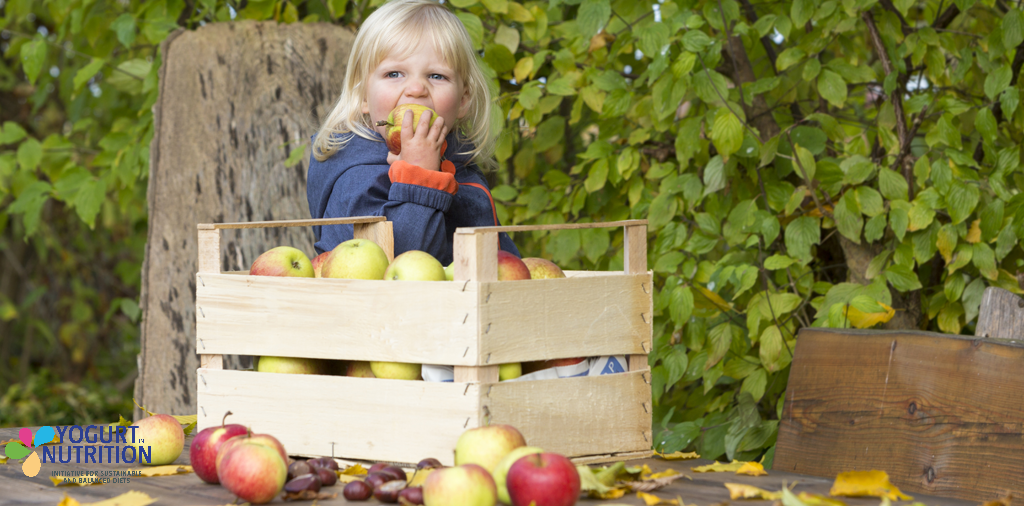It’s time to look at the “sustainable healthy diet” topic we covered in 2020! We have analyzed several publications on sustainability, diet models and the place of dairy and plant-based products. They were enriched by online events and infographics we developed on the topic.
Building ourselves a healthy and sustainable diet is one of the main preoccupations of this last period. To help us, international recommendations have been edited, based on modelizations and an ideal diet. However, between the model and reality, there are difficult gaps to manage.
Why and how to have a more healthy sustainable diet?
A diet is more than the sum of the nutrients and foods eaten, says a report from the United Nations’ Food and Agriculture Organization (FAO) and the World Health Organization (WHO). What we eat is part of our way of life. Food systems and diets are shaped by social and cultural factors and what we can afford.
At the same time, food systems are not environmentally sustainable, as they account for up to 35% of greenhouse gas emissions, use lots of freshwater and cause pollution of land and water.
Therefore, the main issue is to build sustainable healthy diets that promote health and wellbeing, have a low environmental impact, are affordable, safe, available and culturally acceptable.
An ideal sustainable diet?
On one hand, most dietary guidelines, including the Dietary Guidelines for Americans (DGA), are based on nutritional needs and don’t consider environmental sustainability. The DGA guidelines were developed for the US population and aim to encourage dietary intake in ways that are easily adopted. This means making small or moderate changes, rather than large changes that many people could find difficult to stick with.
On the other hand, many models have been created to shape an ideal diet, in line with environmental issues. Scientists are working hard to design healthy diets that could help put us on track for a sustainable food system that protects our environment. One such approach was put forward recently by the EAT-Lancet Commission on Healthy Diets from Sustainable Food Systems (EAT-Lancet) which developed a global reference diet.
A necessary local adaptation
To comply with the four pillars of sustainability, guidelines should not only consider planetary boundaries and nutritional needs but should also fit local dietary guidelines, be affordable and available.
Designing diets that meet environmental targets, and are nutritionally adequate, is challenging and require breakthrough innovations in agriculture production and food technology as well as increase fortification of specific foods .
Experts insist: the diets should be developed localy and consider cultural acceptability. Such a tactic could lead to easier and long-term behavior changes.
What about dairy products and plant-based alternatives?
There is much confusion around consumption frequencies for dairy products when considering nutritional needs, evidence of health benefits and recommendations to reduce animal-source foods. So, how much dairy should we be eating ?
In recent years, the surge in vegetarian and vegan diets, greater awareness around lactose intolerance and milk allergy, and concerns over sustainability and the environment have encouraged the switch to a more plant-based diet.
Using data from the 2011–2013 Australian Health Survey, this study shows that dairy foods (milk, cheese and yogurt) are an important source of nutrients in a low GHGE diet, as they are nutrient-dense. Indeed, dairy milk is a staple food rich in protein, carbohydrates, with a range of minerals and vitamins, and a variable amount of fat depending on whether it is full-fat or skimmed.
In general, plant-based foods and drinks have different nutritional contents to dairy products. Dairy has a complex and nutrient-dense matrix and plant-based foods can have lower environmental impact. Balancing them may be an interesting lead when seeking a sustainable and healthy diet.
For more information, we invite you also to re-discover:
- The synthesis, abstracts, video of our online summit « Eating to protect our health and our planet », organized during ASN nutrition 2020, with the contribution of
- Janet Ranganathan (WRI, USA), “Creating a sustainable food future: a menu of solutions to feed nearly 10 billion people by 2050”,
- Pieter van’t Veer (Wageningen University, the Netherlands), “Healthy and sustainable diets: What do we learn from modeling studies”,
- Jess Haines (University of Guelph, Canada) , “How to achieve sustainable healthy eating in practice?”
- Our infographic on « Sustainable healthy diets: from science to your plate! »
- Our recent live event on sustainable diets, with Sharon Donovan, Azmina Govindji and Pieter van’t Veer
Sources:
Food and Agriculture Organization of the United Nations and World Health Organization. Sustainable healthy diets – Guiding principles. 2019. Rome
- Blackstone NT, Conrad Z. Comparing the recommended eating patterns of the EAT-Lancet Commission and Dietary Guidelines for Americans: Implications for sustainable nutrition. Curr Dev Nutr. 2020;4(3):nzaa015.
- Broekema R, Tyszler M, van’t Veer P et al. Future-proof and sustainable healthy diets based on current eating patterns in the Netherlands. Am J Clin Nutr. 2020 Aug 7:nqaa217.
- Ridoutt BG, Baird D, Hendrie GA et al. The role of dairy foods in lower greenhouse gas emission and higher diet quality dietary patterns. Eur J Nutr. 2020 Apr 10.
- Paul AA, Kumar S, Kumar V et al. Milk Analog: Plant based alternatives to conventional milk, production, potential and health concerns. Crit Rev Food Sci Nutr. 2019. Oct 16:1-19



